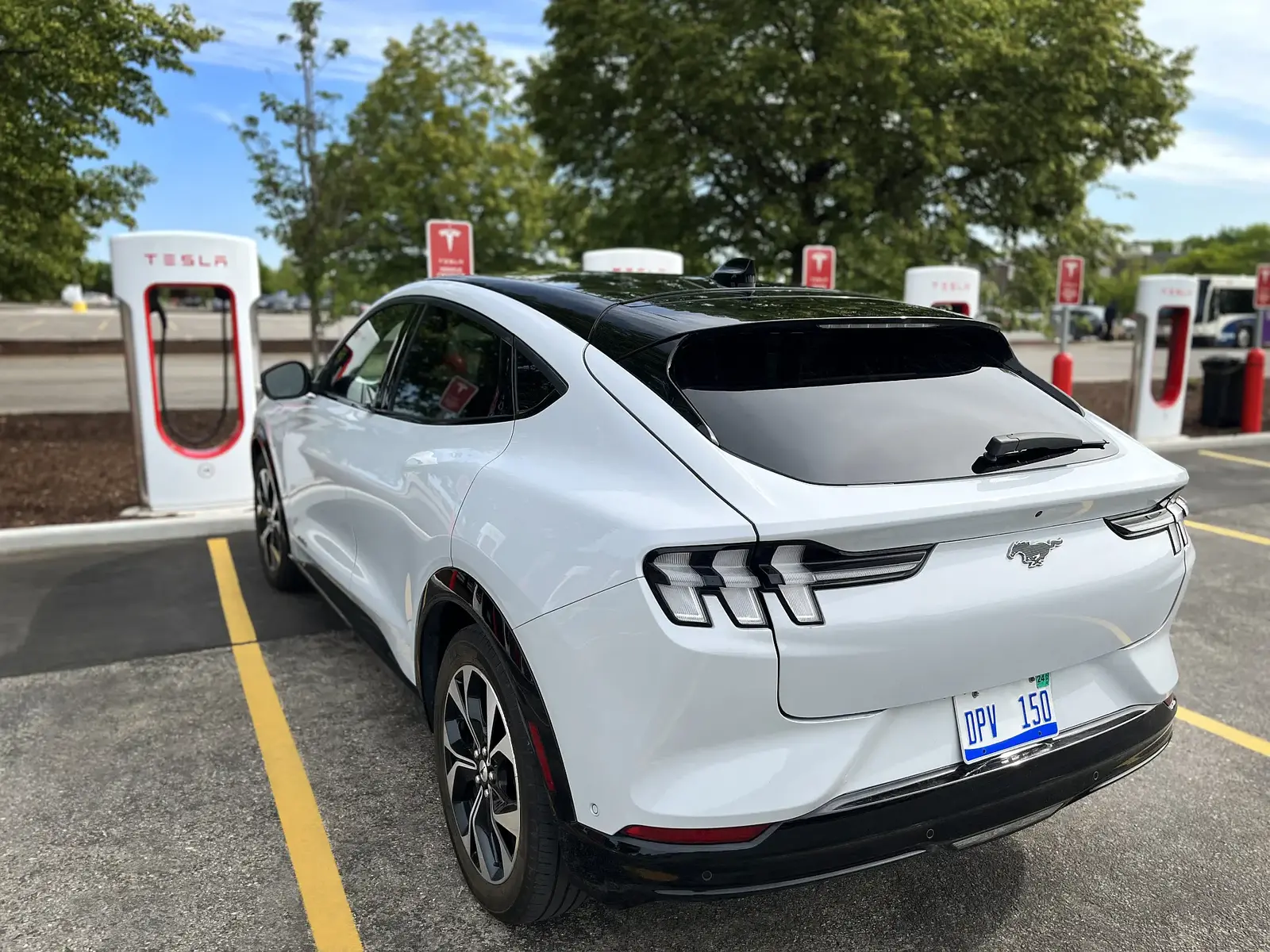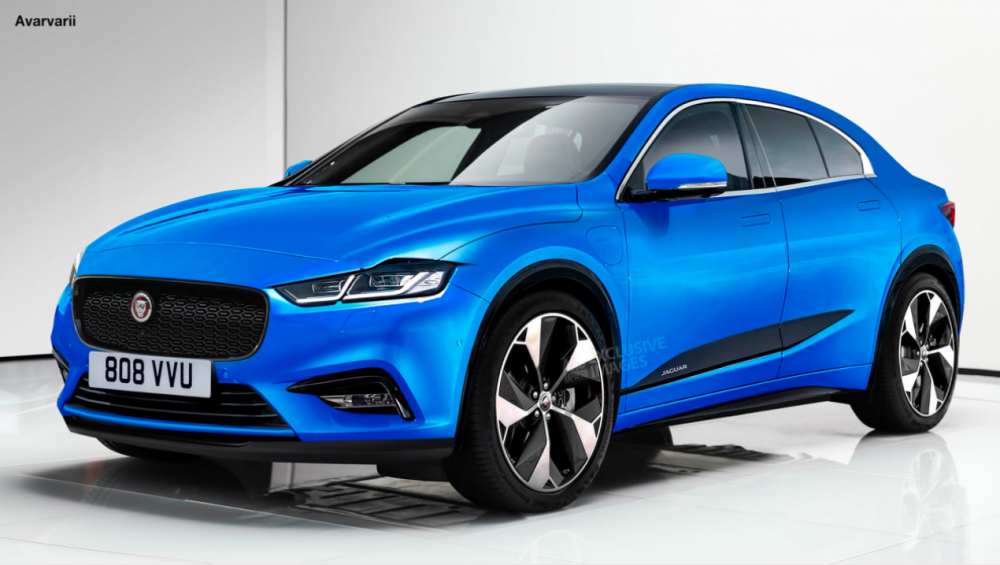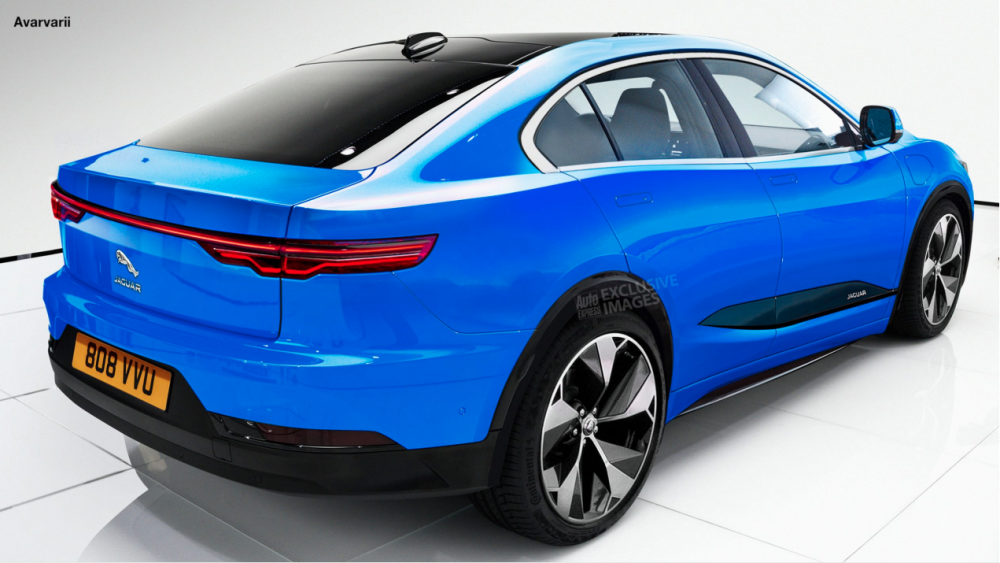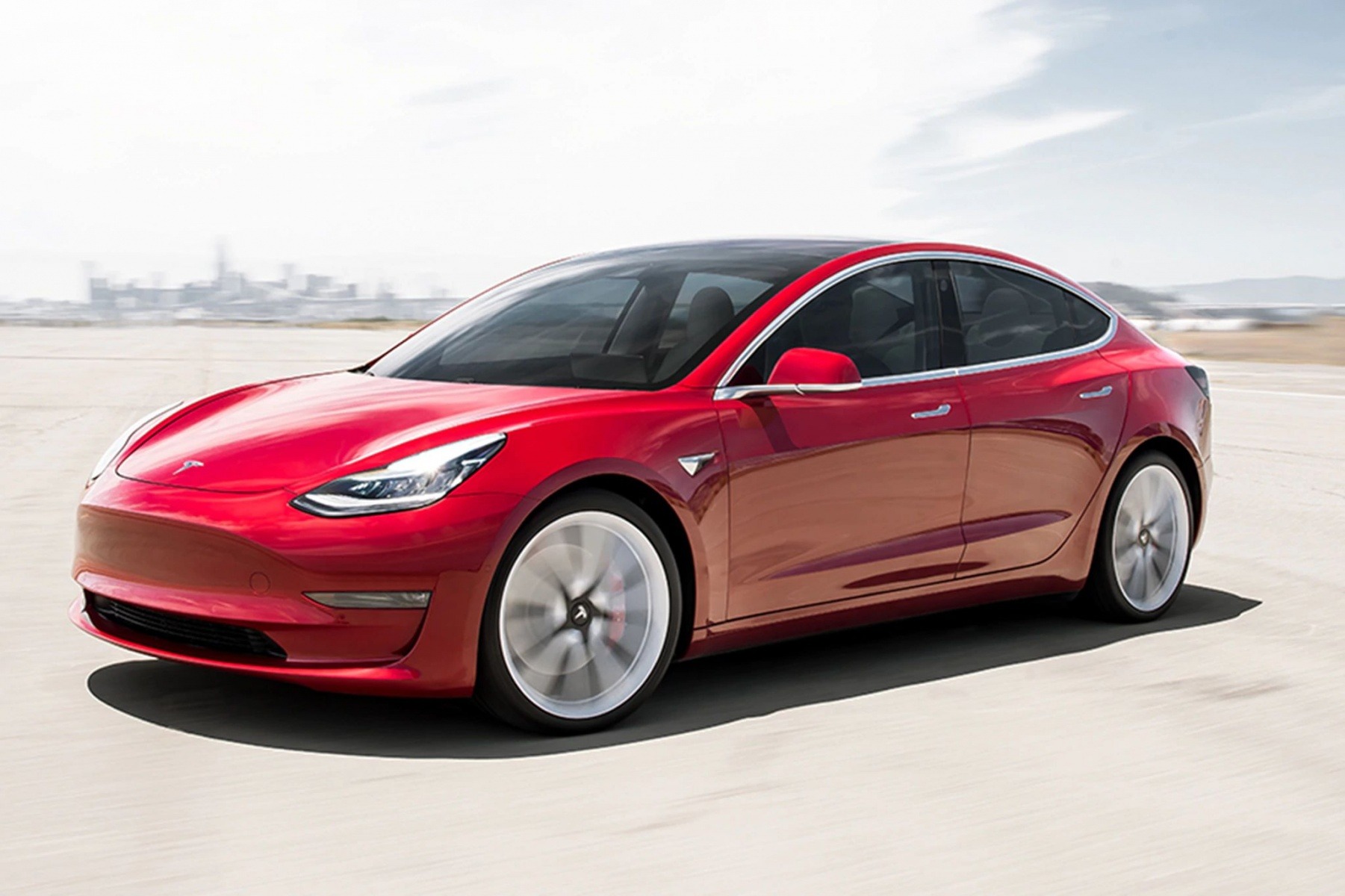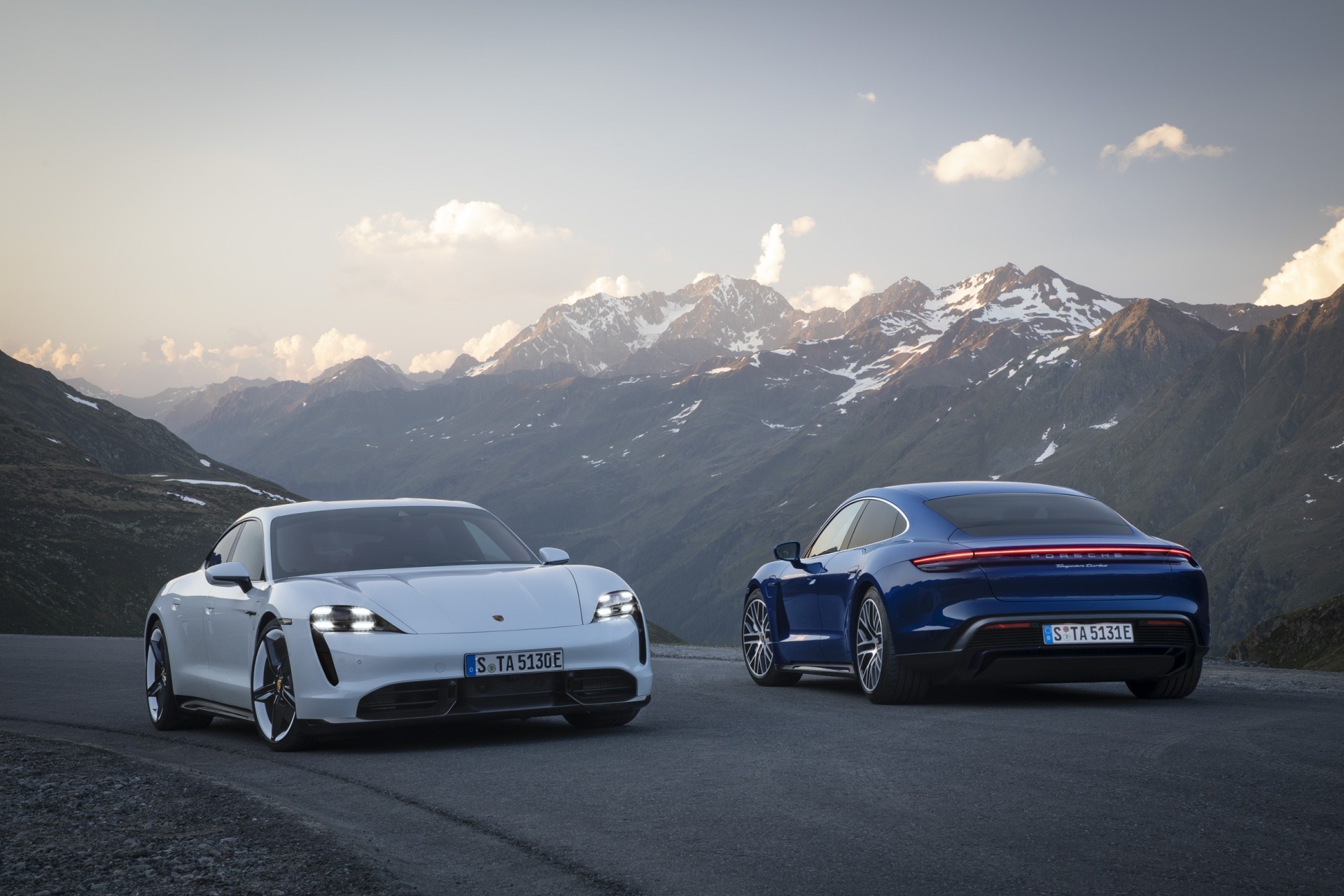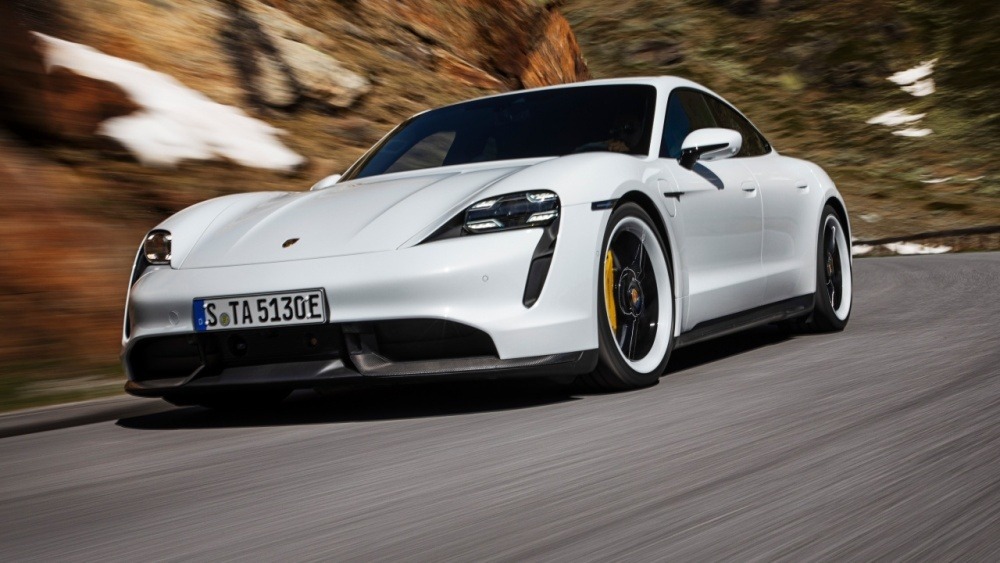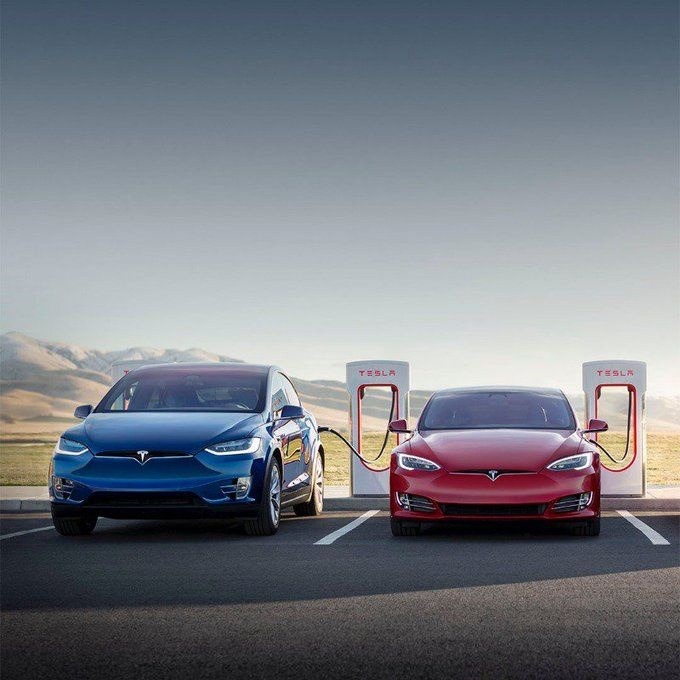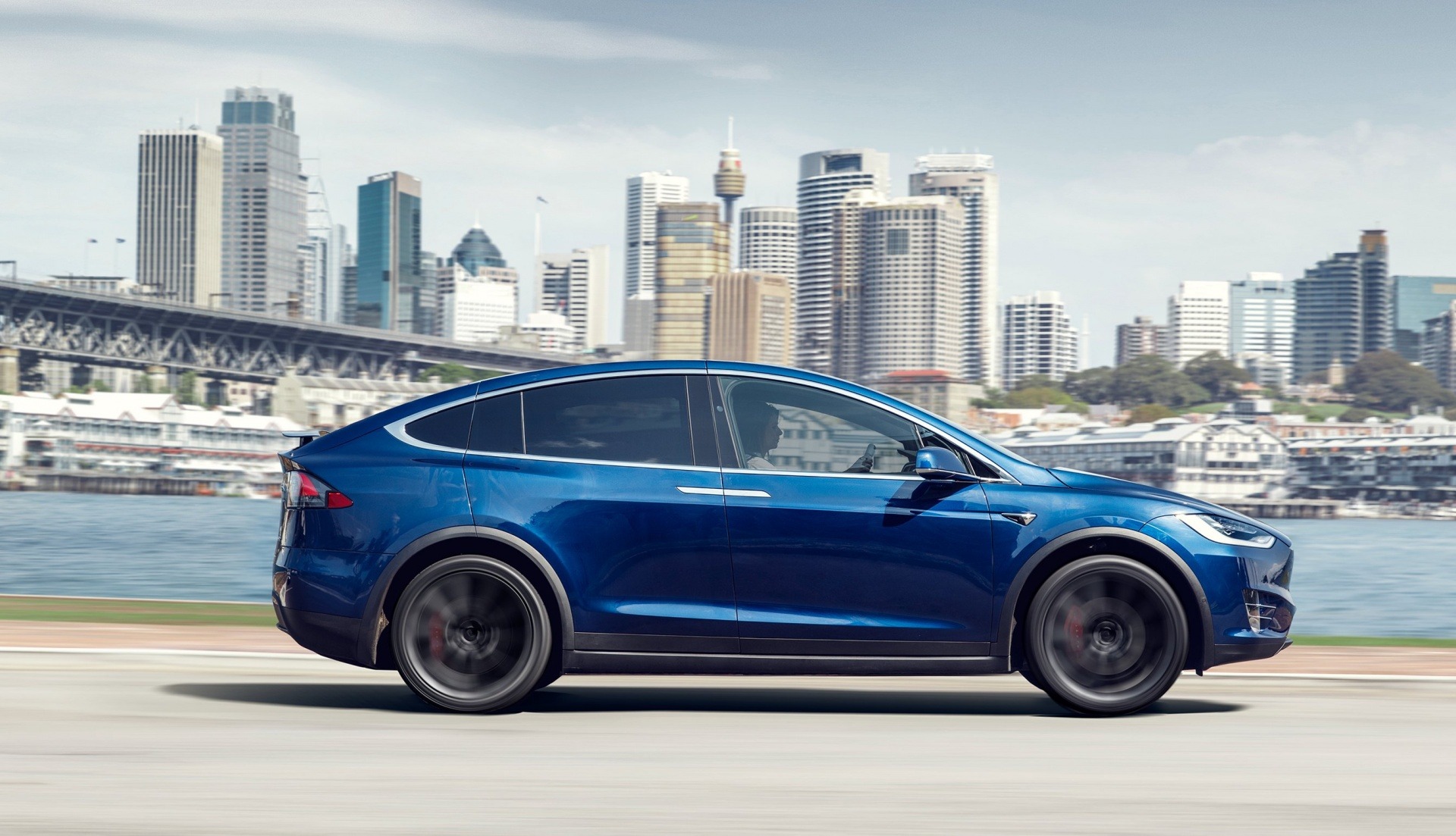Search the Community
Showing results for tags 'tesla'.
-
Yesterday, Rivian announced that drivers of Rivian R1T and R1S vehicles are now able to charge at most Tesla Supercharger locations. Like Ford EV drivers, Rivian owners will receive a free NACS to CCS adapter. The Supercharger network has been integrated into Rivian's navigation and charging app, enabling "plug-and-charge" simplicity without needing to pull up an app. Billing for charge sessions at Tesla supercharger stations is handled automatically through the Rivian network. Starting in 2025 with the Rivian R1S and R1T, Rivian vehicles will adopt the NACS charge port, enabling drivers of those vehicles native access to the Supercharger network and other NACS chargers without an adapter. The Rivian R2 and Rivian R3 will be equipped with the NACS port from the start of production. Rivian announced in June, 2023 that they would adopt the NACS adapter and enable Tesla Supercharging access. They are the second automaker to do so, following Ford enabling Supercharger access earlier this month. Rivian has also been busy building its own Rivian Adventure Network, a series of charging stations focused on more remote locations where Rivian drivers might access like national parks. Currently, the Rivian Adventure Network is limited to Rivian drivers, but later this year Rivian will be opening access to all electric vehicles. The Rivian NACS to CCS adapters begin shipping in April. In the meantime, Rivian drivers might borrow a Ford NACS to CCS adapter from a friend. View full article
- 3 replies
-
- 1
-

-
- electric vehicle
- electric vehicle charging
-
(and 4 more)
Tagged with:
-
Yesterday, Rivian announced that drivers of Rivian R1T and R1S vehicles are now able to charge at most Tesla Supercharger locations. Like Ford EV drivers, Rivian owners will receive a free NACS to CCS adapter. The Supercharger network has been integrated into Rivian's navigation and charging app, enabling "plug-and-charge" simplicity without needing to pull up an app. Billing for charge sessions at Tesla supercharger stations is handled automatically through the Rivian network. Starting in 2025 with the Rivian R1S and R1T, Rivian vehicles will adopt the NACS charge port, enabling drivers of those vehicles native access to the Supercharger network and other NACS chargers without an adapter. The Rivian R2 and Rivian R3 will be equipped with the NACS port from the start of production. Rivian announced in June, 2023 that they would adopt the NACS adapter and enable Tesla Supercharging access. They are the second automaker to do so, following Ford enabling Supercharger access earlier this month. Rivian has also been busy building its own Rivian Adventure Network, a series of charging stations focused on more remote locations where Rivian drivers might access like national parks. Currently, the Rivian Adventure Network is limited to Rivian drivers, but later this year Rivian will be opening access to all electric vehicles. The Rivian NACS to CCS adapters begin shipping in April. In the meantime, Rivian drivers might borrow a Ford NACS to CCS adapter from a friend.
- 3 comments
-
- 1
-

-
- electric vehicle
- electric vehicle charging
-
(and 4 more)
Tagged with:
-
Owners of Ford Mustang Mach-E and F-150 Lightning vehicles have nearly doubled their charging location options overnight with 15,000+ new chargers added to the Ford BlueOval Charge Network. Last May, Ford announced they signed an agreement with Tesla for Ford EVs to gain access to Tesla Supercharger locations. Currently, the access is limited to just the two retail EVs that Ford sells and not the commercially oriented Ford e-Transit van. A Ford representative indicated that a future announcement for e-Transit drivers could be coming. In addition to access to the Tesla network, Ford will begin transitioning its EVs to use the new Tesla-designed NACS plug that is backward compatible with the existing Tesla design. Ford vehicles already built and sold with the CCS plug are eligible for a complimentary NACS to CCS adapter from Ford. Owners may register their VIN to receive their adapter in the Ford Pass app or at ford.com/FastChargingAdapter. Owners are allowed one free adapter per VIN. Charging a Mustang Mach-E or F-150 Lightning takes just two steps. Plug the adapter into the vehicle and plug the Supercharger cable into the plug in a simple Plug-to-Charge process. Drivers are charged for their session directly through the BlueOval network with whatever payment method is already set up. While 15,000+ Tesla Superchargers are available for Ford drivers' use, not every Tesla charger is compatible. Tesla Superchargers that have peak rates of 250+ kilowatts (kW) and an all-black charge cord and handle are compatible with Ford EVs. L2 Destination chargers and 150kW stations with a silver collar on the charge plug are not compatible. View full article
- 2 replies
-
- 1
-

-
- electric vehicle
- ev
-
(and 5 more)
Tagged with:
-
Owners of Ford Mustang Mach-E and F-150 Lightning vehicles have nearly doubled their charging location options overnight with 15,000+ new chargers added to the Ford BlueOval Charge Network. Last May, Ford announced they signed an agreement with Tesla for Ford EVs to gain access to Tesla Supercharger locations. Currently, the access is limited to just the two retail EVs that Ford sells and not the commercially oriented Ford e-Transit van. A Ford representative indicated that a future announcement for e-Transit drivers could be coming. In addition to access to the Tesla network, Ford will begin transitioning its EVs to use the new Tesla-designed NACS plug that is backward compatible with the existing Tesla design. Ford vehicles already built and sold with the CCS plug are eligible for a complimentary NACS to CCS adapter from Ford. Owners may register their VIN to receive their adapter in the Ford Pass app or at ford.com/FastChargingAdapter. Owners are allowed one free adapter per VIN. Charging a Mustang Mach-E or F-150 Lightning takes just two steps. Plug the adapter into the vehicle and plug the Supercharger cable into the plug in a simple Plug-to-Charge process. Drivers are charged for their session directly through the BlueOval network with whatever payment method is already set up. While 15,000+ Tesla Superchargers are available for Ford drivers' use, not every Tesla charger is compatible. Tesla Superchargers that have peak rates of 250+ kilowatts (kW) and an all-black charge cord and handle are compatible with Ford EVs. L2 Destination chargers and 150kW stations with a silver collar on the charge plug are not compatible.
- 2 comments
-
- electric vehicle
- ev
-
(and 5 more)
Tagged with:
-
Starting in 2025 with select EVs, Stellantis vehicles in North America will begin using the SAE J3400 charging connector, more commonly known as NACS. The NACS connector is an evolution of the Tesla plug and is backward compatible. Stellantis was the last large holdout to adopt NACS and this move effectively completes the commitment from all companies to switch to the new standard. An adapter will be made available for owners of vehicles equipped with a CCS port. (At the time of this writing, the only CCS equipped vehicle offered in the US by Stellantis is the Fiat 500e). Stellantis is one of the seven auto makers that have joined forces to build IONNA, a new charging network to rival Tesla's. IONNA aims to build 30,000 charge points across North America by 2030. IONNA charge points will be equipped with both CCS and NACS plugs, with the first stations opening later this year. What is missing from this release is any mention of Tesla Supercharger network access for Stellantis-brand vehicle owners. We've reached out to Stellantis for clarification and will report back. Related: Seven Manufactures Form Joint-Venture to Build a Rival to Tesla's Supercharger Network Ram Smashes Range Anxiety with their Ram 1500 REV Production Version of RAM 1500 REV to get Optional Range Extender
- 2 comments
-
- alfa romeo
- chrysler
-
(and 6 more)
Tagged with:
-

Choice Hotels Signs Agreement with Tesla to Install Chargers
Drew Dowdell posted an article in Electric Vehicles
Choice Hotels has announced a deal with Tesla to install chargers across its range of properties. Participating brands Radisson, Quality Inn, Cambria, Comfort, Country Inn & Suite, and other Choice brands can add four or more Tesla Universal Wall Connectors for guests to use. Guests are able to filter their hotel search to find properties offering charging inside the Choice Hotels app. Customers who have one of Choice Hotels' branded credit cards will be eligible for points bonuses when used for charging at Choice Hotel locations. The Tesla Universal Wall Connector is a 240-volt unit that uses a 48-amp circuit and can provide 11.5 kW of power. Its primary connector is the North American Charging Standard (NACS) format while a J1772 adapter is stored in the unit itself. While not a fast charger, the availability of these units at a hotel solves the issue of charging while traveling. For a Tesla Model-3, this charger can add up to 44 miles of range per hour. The Tesla Universal Wall Connector costs $595 per unit at the time of this writing and is natively compatible with virtually all new EVs on the road today. Owners of the Nissan Leaf and other older EVs, however, are out of luck. The Cambria brand of Choice Hotels has been aggressively expanding its EV charging availability, with 41% of properties already offering at least one charger and a goal of 100% by the end of 2024. The Choice Hotel footprint includes over 7,500 hotels in 46 countries. Choice Hotels joins the Marriott and Hilton hotel chains' similar recent announcements of expanding EV charging access. Our take: Charging while you sleep has always been one of the selling points of EVs, so charging while you sleep away from home makes perfect sense. Cheers and Gears is reader-supported. If you purchase through the links provided, we may earn a commission at no additional cost to you. Read More: Hilton Adding EV Charging to Over 2,000 Hotels in North America Marriott and EV Connect Partner to Install EV Chargers in North America- 2 comments
-
- 1
-

-
- ev
- ev infrastructure
-
(and 2 more)
Tagged with:
-
Starting in 2025 with select EVs, Stellantis vehicles in North America will begin using the SAE J3400 charging connector, more commonly known as NACS. The NACS connector is an evolution of the Tesla plug and is backward compatible. Stellantis was the last large holdout to adopt NACS and this move effectively completes the commitment from all companies to switch to the new standard. An adapter will be made available for owners of vehicles equipped with a CCS port. (At the time of this writing, the only CCS equipped vehicle offered in the US by Stellantis is the Fiat 500e). Stellantis is one of the seven auto makers that have joined forces to build IONNA, a new charging network to rival Tesla's. IONNA aims to build 30,000 charge points across North America by 2030. IONNA charge points will be equipped with both CCS and NACS plugs, with the first stations opening later this year. What is missing from this release is any mention of Tesla Supercharger network access for Stellantis-brand vehicle owners. We've reached out to Stellantis for clarification and will report back. Related: Seven Manufactures Form Joint-Venture to Build a Rival to Tesla's Supercharger Network Ram Smashes Range Anxiety with their Ram 1500 REV Production Version of RAM 1500 REV to get Optional Range Extender View full article
- 2 replies
-
- 1
-

-
- alfa romeo
- chrysler
-
(and 6 more)
Tagged with:
-
Choice Hotels has announced a deal with Tesla to install chargers across its range of properties. Participating brands Radisson, Quality Inn, Cambria, Comfort, Country Inn & Suite, and other Choice brands can add four or more Tesla Universal Wall Connectors for guests to use. Guests are able to filter their hotel search to find properties offering charging inside the Choice Hotels app. Customers who have one of Choice Hotels' branded credit cards will be eligible for points bonuses when used for charging at Choice Hotel locations. The Tesla Universal Wall Connector is a 240-volt unit that uses a 48-amp circuit and can provide 11.5 kW of power. Its primary connector is the North American Charging Standard (NACS) format while a J1772 adapter is stored in the unit itself. While not a fast charger, the availability of these units at a hotel solves the issue of charging while traveling. For a Tesla Model-3, this charger can add up to 44 miles of range per hour. The Tesla Universal Wall Connector costs $595 per unit at the time of this writing and is natively compatible with virtually all new EVs on the road today. Owners of the Nissan Leaf and other older EVs, however, are out of luck. The Cambria brand of Choice Hotels has been aggressively expanding its EV charging availability, with 41% of properties already offering at least one charger and a goal of 100% by the end of 2024. The Choice Hotel footprint includes over 7,500 hotels in 46 countries. Choice Hotels joins the Marriott and Hilton hotel chains' similar recent announcements of expanding EV charging access. Our take: Charging while you sleep has always been one of the selling points of EVs, so charging while you sleep away from home makes perfect sense. Cheers and Gears is reader-supported. If you purchase through the links provided, we may earn a commission at no additional cost to you. Read More: Hilton Adding EV Charging to Over 2,000 Hotels in North America Marriott and EV Connect Partner to Install EV Chargers in North America View full article
- 2 replies
-
- ev
- ev infrastructure
-
(and 2 more)
Tagged with:
-
Hertz has announced that it will sell off roughly 30%, or 20,000 vehicles, of its EV fleet. The move came after it announced a scale-back from its original goal of electrifying 25% of the rental fleet. Hertz's original goal was to acquire 100,000 Tesla and 65,000 from Polestar over five years. Teslas make up roughly 80% of the Hertz EV fleet. At the time of this writing, there are 631 Teslas for sale on Hertz's website and only 40 EVs from other brands. In a statement, Hertz cited substantially higher than average repair costs "for EVs" with extended wait times for parts availability. Additionally, Hertz reported that manufacturers' new lower retail prices hurt the resale values of the existing fleet, leading to substantial depreciation losses. Hertz is expecting to take a $245 million write-down on the vehicles, or an average loss of $12,250 per vehicle. Unlike other brands, Teslas purchased by Hertz were purchased at the same retail price the general public pays without any volume discount. Our take While many in the anti-EV crowd see this as an indictment against EVs, it is really more of an indictment against Tesla. Tesla's use of the Gigapress, while revolutionary technology, means that even minor collisions can be catastrophic to the vehicle. But this technology is coming to other brands as well. General Motors has purchased a Gigapress manufacturer and Volkswagen is planning on using Gigapress in their future vehicles. Additionally, Tesla does not have a deep reserve of spare parts, leading to long wait times for repairs. Tesla's erratic pricing moves have also made it difficult to accurately predict resale value of their vehicles. For an individual, it is an annoyance but for a corporation that buys 100,000 vehicles, it can cost hundreds of millions of dollars. But Hertz's loss could be your gain. If you have been looking at purchasing an EV but don't want to pay the high prices of a new one, a wave of Tesla Model-3 and Model-Y are about to hit the market. Couple that with a $4,000 tax credit for pre-owned EVs and there will be good deals to be had. Even if you do not buy one of the Teslas from Hertz, this move will likely drop the price of used EVs on the market, so keep your eyes open for a deal. View full article
-
Hertz has announced that it will sell off roughly 30%, or 20,000 vehicles, of its EV fleet. The move came after it announced a scale-back from its original goal of electrifying 25% of the rental fleet. Hertz's original goal was to acquire 100,000 Tesla and 65,000 from Polestar over five years. Teslas make up roughly 80% of the Hertz EV fleet. At the time of this writing, there are 631 Teslas for sale on Hertz's website and only 40 EVs from other brands. In a statement, Hertz cited substantially higher than average repair costs "for EVs" with extended wait times for parts availability. Additionally, Hertz reported that manufacturers' new lower retail prices hurt the resale values of the existing fleet, leading to substantial depreciation losses. Hertz is expecting to take a $245 million write-down on the vehicles, or an average loss of $12,250 per vehicle. Unlike other brands, Teslas purchased by Hertz were purchased at the same retail price the general public pays without any volume discount. Our take While many in the anti-EV crowd see this as an indictment against EVs, it is really more of an indictment against Tesla. Tesla's use of the Gigapress, while revolutionary technology, means that even minor collisions can be catastrophic to the vehicle. But this technology is coming to other brands as well. General Motors has purchased a Gigapress manufacturer and Volkswagen is planning on using Gigapress in their future vehicles. Additionally, Tesla does not have a deep reserve of spare parts, leading to long wait times for repairs. Tesla's erratic pricing moves have also made it difficult to accurately predict resale value of their vehicles. For an individual, it is an annoyance but for a corporation that buys 100,000 vehicles, it can cost hundreds of millions of dollars. But Hertz's loss could be your gain. If you have been looking at purchasing an EV but don't want to pay the high prices of a new one, a wave of Tesla Model-3 and Model-Y are about to hit the market. Couple that with a $4,000 tax credit for pre-owned EVs and there will be good deals to be had. Even if you do not buy one of the Teslas from Hertz, this move will likely drop the price of used EVs on the market, so keep your eyes open for a deal.
-
BMW, General Motors, Honda, Hyundai, Kia, Mercedes-Benz, and Stellantis announced a new venture today to build out an EV charging network to rival Tesla's. The aim is to install at least 30,000 high-speed charging points in urban and highway locations across then country. The first chargers will go online in the U.S. in the summer of 2024, with chargers in Canada following shortly after. Of the manufacturers in this venture, General Motors and Mercedes-Benz recently announced agreements with Tesla for access to their SuperCharger network. While Ford, General Motors, Rivian, Mercedes-Benz, have all committed to Tesla's NACS charging connector. The network will use the 350-kw / 800-volt and offer both Tesla's NACS and CCS connectors. What wasn't announced was support for the V4 version of the NACS standard, which supports 800-Volt peak charging, but 800-Volt charging is a key feature of GM's Ultium technology, so we expect it will be offered. The as yet unnamed network will be powered by renewable energy and will be open to all makes and models that use either the NACS or CCS connectors. Sorry, Nissan Leaf and Kia Soul EV owners, you're out of luck. This move reflects a frustration by manufacturers regarding the reliability and build-out speed when relying on third-party charging networks. Electrify America, one of the largest non-Tesla fast-charging networks, has a reputation for broken and error-prone charging stations. With EV adoption being a Chicken and Egg problem, this move by the manufacturers is an attempt to squeeze the egg out of the chicken. To put a project of this size into perspective, the Tesla SuperCharger network offers 20,400 fast-charging ports at 1,900 locations while Electrify America offers 3,600 fast-charging ports at 800 locations, but EA's network is mostly at the slower charge rate of 150kw rather than 350kw. General Motors and Mercedes-Benz, which are both building out their own charging networks, will continue to do so separately from this plan. Related Articles: Mercedes-Benz Announces Their New EV Charging Network Tesla Supercharger Network of North America Now a Benz Charging Option Rivian Latest to Join the NACS Camp NACS the North American New Charging Standard? Ford EVs Gain Access to Tesla SuperChargers, Ford to Adopt Tesla NACS Charge Port
- 7 comments
-
- charging
- charging network
-
(and 3 more)
Tagged with:
-
BMW, General Motors, Honda, Hyundai, Kia, Mercedes-Benz, and Stellantis announced a new venture today to build out an EV charging network to rival Tesla's. The aim is to install at least 30,000 high-speed charging points in urban and highway locations across then country. The first chargers will go online in the U.S. in the summer of 2024, with chargers in Canada following shortly after. Of the manufacturers in this venture, General Motors and Mercedes-Benz recently announced agreements with Tesla for access to their SuperCharger network. While Ford, General Motors, Rivian, Mercedes-Benz, have all committed to Tesla's NACS charging connector. The network will use the 350-kw / 800-volt and offer both Tesla's NACS and CCS connectors. What wasn't announced was support for the V4 version of the NACS standard, which supports 800-Volt peak charging, but 800-Volt charging is a key feature of GM's Ultium technology, so we expect it will be offered. The as yet unnamed network will be powered by renewable energy and will be open to all makes and models that use either the NACS or CCS connectors. Sorry, Nissan Leaf and Kia Soul EV owners, you're out of luck. This move reflects a frustration by manufacturers regarding the reliability and build-out speed when relying on third-party charging networks. Electrify America, one of the largest non-Tesla fast-charging networks, has a reputation for broken and error-prone charging stations. With EV adoption being a Chicken and Egg problem, this move by the manufacturers is an attempt to squeeze the egg out of the chicken. To put a project of this size into perspective, the Tesla SuperCharger network offers 20,400 fast-charging ports at 1,900 locations while Electrify America offers 3,600 fast-charging ports at 800 locations, but EA's network is mostly at the slower charge rate of 150kw rather than 350kw. General Motors and Mercedes-Benz, which are both building out their own charging networks, will continue to do so separately from this plan. Related Articles: Mercedes-Benz Announces Their New EV Charging Network Tesla Supercharger Network of North America Now a Benz Charging Option Rivian Latest to Join the NACS Camp NACS the North American New Charging Standard? Ford EVs Gain Access to Tesla SuperChargers, Ford to Adopt Tesla NACS Charge Port View full article
- 7 replies
-
- 1
-

-
- charging
- charging network
-
(and 3 more)
Tagged with:
-
Ford and Tesla jointly announced today that starting in the spring of 2024, Ford EV drivers will gain access to more than 12,000 Tesla Superchargers in North America. This move will more than double the number of chargers available to Ford EV drivers who currently have access to 10,000 DC fast-chargers in the BlueOval EV network. Additionally, Ford dealers are adding 1,800 public-facing fast chargers across the continent. Existing EV models like the F-150 Lightning, Mustang Mach-E, and E-Transit Vans will be able to use a Tesla developed adaptor to convert from the Tesla NACS Charger to the built-in CCS charge port, allowing access to Tesla V3 Superchargers. Moving forward, Ford will change from the CCS standard to the Tesla NACS standard on all EV models starting in 2025. The addition of Tesla SuperChargers to the BlueOval Charge Network creates the largest integrated network of fast-charger in North America. Ford cites Tesla's charge network reliability and the smaller form factor of the NACS plug as reasons for the switch.
-
Ford and Tesla jointly announced today that starting in the spring of 2024, Ford EV drivers will gain access to more than 12,000 Tesla Superchargers in North America. This move will more than double the number of chargers available to Ford EV drivers who currently have access to 10,000 DC fast-chargers in the BlueOval EV network. Additionally, Ford dealers are adding 1,800 public-facing fast chargers across the continent. Existing EV models like the F-150 Lightning, Mustang Mach-E, and E-Transit Vans will be able to use a Tesla developed adaptor to convert from the Tesla NACS Charger to the built-in CCS charge port, allowing access to Tesla V3 Superchargers. Moving forward, Ford will change from the CCS standard to the Tesla NACS standard on all EV models starting in 2025. The addition of Tesla SuperChargers to the BlueOval Charge Network creates the largest integrated network of fast-charger in North America. Ford cites Tesla's charge network reliability and the smaller form factor of the NACS plug as reasons for the switch. View full article
-
According to an interview done by Steve Fowler at Auto Express UK, Thierry Bollore the new CEO of Jaguar Land Rover is considering taking Jaguar pure EV to be a Tesla / Polestar competitor and would start with the new Baby Jaguar concept they built. This is a Tesla 3 sized luxury 4 door sedan. This comes after so many stories about the Flagship XJ EV being postponed as they focus on ICE auto's. Jaguar has confirmed that due to the success of their i-Pace CUV, they are moving forward with delivery of the XJ EV in 2021. Castle Bromwich will be home to all electric auto's that they make including the Road biased Range Rover EV. This comes after sales of the Jaguar XE dropped 28% in 2019. As such, the board with new CEO leadership feels it needs to aggressively move to an all new replacement of the XE with this all electric baby Jaguar. Jaguar management is also closely watching Polestar and especially their Polestar 2 EV. The all new MLA EV platform would allow replacements of the E-Pace and F-Pace to be a priority once the XE and XJ are launched. Jaguar according to the story is on pace to launch plug-in hybrids of the E & F Pace that will get a facelift along with a move to a Hybrid as a stop gap measure till they are replaced with EVs. There are also talks of a smaller electric Jaguar as Jaguar has signed letters of agreement to work with BMW on a electric version of the BMW 1 & 2 series that will go electric and this would bring in a much smaller footprint Jaguar below the XE and i-Pace. A big question is that the F-Type sports car while being considered a must by some executives on the Board could fall to the history bin as it only sold 6,000 in the last financial year globally making it the second worst performing auto in their portfolio behind the XJ which will come out next year in the dramatic clean sheet design. https://www.autoexpress.co.uk/jaguar/353006/new-baby-electric-jaguar-take-tesla-model-3
-
- baby jaguar
- polestar
-
(and 1 more)
Tagged with:
-
The Tesla Model 3 nearly broke into the top 10 best selling vehicles in Europe for September 2019, missing the mark by just 217 units. Overall, sales growth in the EU is strong with 14 markets reporting positive numbers. Germany came in at 9.1 percent and Italy came in at 6.5 percent. Battery electric vehicles were up sharply, increasing 119 percent, of which Tesla controlled nearly 50% of that number. Total Tesla registrations were 19,500 out of the 40,700 BEVs registered. That put the Tesla Model 3 as the best selling BEV in Europe. For September, the Volkwagen Golf was the best selling vehicle in Europe with 32,398 units registered. Tesla shares jumped 18 percent yesterday after a surprise profit for Q3 of $1.86 per share, up from an expected loss of 42 cents per share. View full article
-
The Tesla Model 3 nearly broke into the top 10 best selling vehicles in Europe for September 2019, missing the mark by just 217 units. Overall, sales growth in the EU is strong with 14 markets reporting positive numbers. Germany came in at 9.1 percent and Italy came in at 6.5 percent. Battery electric vehicles were up sharply, increasing 119 percent, of which Tesla controlled nearly 50% of that number. Total Tesla registrations were 19,500 out of the 40,700 BEVs registered. That put the Tesla Model 3 as the best selling BEV in Europe. For September, the Volkwagen Golf was the best selling vehicle in Europe with 32,398 units registered. Tesla shares jumped 18 percent yesterday after a surprise profit for Q3 of $1.86 per share, up from an expected loss of 42 cents per share.
-
After four years of watching Porsche's Mission E concept go through the stages to production, the final product has finally arrived in the Porsche Taycan. In doing so, Porsche has its sights set directly on Telsa. At launch, the Taycan will be available only in the top trims of Taycan Turbo and Turbo S. Being fully electric, neither of them actually has a turbo of course. Packing a 93.4 kWh battery pack in its floor, the Taycan has a lower center of gravity than a Porsche 911. The top-line Turbo S can generate up to 750 horsepower with overboost mode engage and that will get the 5,100 lb car from 0 to 60 in 2.6 seconds. The standard Turbo makes do with 670 horsepower and a 0 to 60 of 3.0 seconds. Top track speed is limited to 161 mph for both. The Taycan is AWD using a dual motor system with one motor at each axle. Unlike EVs from Tesla and Nissan, Porsche uses a two-speed transmission to gain maximum acceleration and easy highway cruising. The Taycan is the first production EV with an 800 volt system instead of the more common 400 volts for other electric cars. With the fastest charging available on the market, the Taycan can recharge from 5% to 80% in just 22.5 minutes under ideal conditions when connected to a 270 kW charger that will be found at all Porsche dealerships. Home chargers will use a more common 9.6 kW charger. Higher speed charging using Electrify America's network is available for free for the first 3 years. While EPA ratings for range have yet to be released, the Turbo is rated for 236 miles to 279 miles on the EU cycle and the Turbo S is rated for 236 miles to 256 miles on the same cycle. Assume somewhere in the mid-250s once the EPA gets their hands on one. While the Taycan does get a traditional hydraulic braking system, Porsche says that the regenerative system can handle 90 percent of all braking. A standard adaptive air suspension is also there with Porsche Dynamic Chassis Control. On the interior Porsche mounted 5 screens that surround the front occupants with tech. Up front is a 2.8 cubic foot glove box storage space, and out back is a bit more roomy 12.9 cubic foot storage. Porsche put indents into the floor for rear passengers to give more legroom. The Taycan is expected to go on sales towards the end of this year. Launch pricing is $154,660 for the Turbo and the Turbo S starts at $186,350. Cheaper models will come later. View full article
- 39 replies
-
- electric vehicle
- ev
- (and 4 more)
-
After four years of watching Porsche's Mission E concept go through the stages to production, the final product has finally arrived in the Porsche Taycan. In doing so, Porsche has its sights set directly on Telsa. At launch, the Taycan will be available only in the top trims of Taycan Turbo and Turbo S. Being fully electric, neither of them actually has a turbo of course. Packing a 93.4 kWh battery pack in its floor, the Taycan has a lower center of gravity than a Porsche 911. The top-line Turbo S can generate up to 750 horsepower with overboost mode engage and that will get the 5,100 lb car from 0 to 60 in 2.6 seconds. The standard Turbo makes do with 670 horsepower and a 0 to 60 of 3.0 seconds. Top track speed is limited to 161 mph for both. The Taycan is AWD using a dual motor system with one motor at each axle. Unlike EVs from Tesla and Nissan, Porsche uses a two-speed transmission to gain maximum acceleration and easy highway cruising. The Taycan is the first production EV with an 800 volt system instead of the more common 400 volts for other electric cars. With the fastest charging available on the market, the Taycan can recharge from 5% to 80% in just 22.5 minutes under ideal conditions when connected to a 270 kW charger that will be found at all Porsche dealerships. Home chargers will use a more common 9.6 kW charger. Higher speed charging using Electrify America's network is available for free for the first 3 years. While EPA ratings for range have yet to be released, the Turbo is rated for 236 miles to 279 miles on the EU cycle and the Turbo S is rated for 236 miles to 256 miles on the same cycle. Assume somewhere in the mid-250s once the EPA gets their hands on one. While the Taycan does get a traditional hydraulic braking system, Porsche says that the regenerative system can handle 90 percent of all braking. A standard adaptive air suspension is also there with Porsche Dynamic Chassis Control. On the interior Porsche mounted 5 screens that surround the front occupants with tech. Up front is a 2.8 cubic foot glove box storage space, and out back is a bit more roomy 12.9 cubic foot storage. Porsche put indents into the floor for rear passengers to give more legroom. The Taycan is expected to go on sales towards the end of this year. Launch pricing is $154,660 for the Turbo and the Turbo S starts at $186,350. Cheaper models will come later.
- 39 comments
-
- 1
-

-
- electric vehicle
- ev
- (and 4 more)
-
G. David Felt Staff Writer Alternative Energy - www.CheersandGears.com 200 MPH plus EV, Do we care? Yesterday April 13th 2017, Lucid sent out an email about how their near production test car hit a top speed of 217 mph at the Ohio's Transportation Center banked oval test track. Many of us that follow the industry know that Tesla limits their auto's to 155 mph. Lucid is on record that they intend to meet the needs of the high-speed cruising market of Europe and Middle east. Simulations can only go so far on a computer and then you have to put rubber to the road. This allows the engineers to monitor and tweak everything from the power train, suspension, body fluidity and so much more. This will allow them to review the data, make adjustments and come back later to push the limit even higher. We know that Lucid is planning on a $60,000 dollar 400hp, 240 mile range RWD EV with the top model being a six figure AWD 1,000 HP and 400 miles of range on a super dense battery pack. This begs the Question, other than the few places you can push this kind of Speed, Does it matter any more if an auto can go over 100 plus mph? This question comes from seeing so many auto's that are now breaking that 6 second 0-60 speed showing they have the torque and hp to maintain the speed needed for daily driving. Lucid News
- 6 replies
-
- 200 mph
- do we care?
- (and 4 more)
-
EV-curious. That’s what I would call myself. Someone that is interested in EVs but just hasn’t found the right one. There are many aspects of an EV that is appealing to me. Instant torque, quick acceleration, the ability to charge at your house or apartment, and the continuation of creating semi-autonomous driving. It’s all so exciting! I’m ready to go out and trade in my 2016 Volkswagen GTI for one now! Or am I? Let’s take a quick look at a small field of electric vehicles, starting with the brand new 2020 Porsche Taycan. The release of the 2020 Porsche Taycan is a feat in and of itself. The car itself is downright sexy, is has a handsome interior, and performance that is pure Porsche. Over 700 HP for the Turbo S model is impressive. It also costs what you would expect an electric super-Porsche would be since the range topping Taycans are coming out first. These are the Turbo and Turbo S which cost over $150,000. After these come onto the market, less expensive and less powerful versions will come. Would this be the car that I will buy? Sure, once I get that CMO position at a major company. This is a dream electric car, but not one that I would consider just yet. What about an attainable electric car? There are a few on the market that cover the bases. Vehicles like the Hyundai Kona Electric, Chevy Bolt, Nissan Leaf, and others have good to respectable range, decent features, and are not the most expensive vehicles. Average prices of $40,000-$45,000 is a bit steep, but electric cars usually command a premium over gasoline vehicles. They also have good driving aids such as blind spot monitoring and adaptive cruise control, something that my current car has and is top priority for me. They’re all very good cars but with flaws such as build quality and designs that keep me from considering one. My problem is simple: performance. Electric cars have instant torque at 0 RPM and can be extremely fast. These EVs just don’t cut the mustard for me since they are more about range than blistering speed. For around $45,000, I can get a gas-powered car such as a Genesis G70 3.3T that is faster, has better range, and the safety features I want. Let’s continue from good electric vehicles to “the best”. Right now, you are probably thinking: “Anthony, you are forgetting the king of electric vehicles. They are synonymous with electric cars and have a huge cult following.” Guess who that is? Yes, that is of course Tesla. You can’t write about electric cars without talking about Tesla. They are a very S 3 X Y R brand indeed. The Model S introduced expensive but seriously quick electric vehicles. The X brought us an odd but much-needed crossover. The 3 is the bread-and-butter maker with a starting price around $40,000, and acceleration that beats almost all vehicles in its class. The Y hasn’t come out yet but is a crossover version of the 3, and the Roadster is a $250,000 supercar. Even though there are three models currently available, I will focus on the Model 3 Performance since that is the one I am most interested in. There is a lot to like about the Model 3 Performance. It has “performance” in its name and with 450 HP, it is one of the quickest sedans I’ve ever driven. The instant torque from the motors is intoxicating and it handles well for a heavy vehicle. Does it tick all the boxes to convert to a Tesla-fanatic? No. Why? The interior. I am not a fan of controlling absolutely everything with a touchscreen and not having my speedometer in front of me. The Model 3 Performance can have semi-autonomous driving, but it is a $7,000 option. Tesla’s Autopilot driver-assist system is standard and is regarded to be one of the best, if not the best driver-assist system. Tesla has sold over 250,000 Model 3 vehicles and it is a genuinely amazing feat for a young company. The range is good at over 310 miles. Pricing starts at $55,000 and is fully-loaded around $64,000. If you are okay with the minimal interior and styling, get yourself a Model 3. I personally am not a fan of either of those, so onward we go. This brings me to a car I am waiting for: The Polestar 2 fastback. Polestar used to be a sub-division of Volvo, like AMG is to Mercedes-Benz. You can still get Polestar-tune Volvos, but Polestar has branched out into their own brand. The Polestar 2 is their first all-electric car. It has over 250 miles of range, 400 HP, and most import to me, gauges that are straight in front of the driver. The design is bold yet looks like an even more modern version of a Volvo. Since Polestar is a sporty company, the performance upgrades include upgraded shocks, brakes, and bigger wheels with Swedish gold seat belts. You get this package mainly for the gold seat belts. Is it pricey at over $60,000? Yes, but it feels justified for the 408 hp and range of 275 miles. 0-60 is said to be around 4.7 seconds but I suspect it will be lower. Will they sell Tesla Model 3 numbers of them? I highly doubt it since they area new brand, but it should be a great competitor to the Tesla Model 3. I like the concept of electric vehicles. I know that one day, there will be one charging at my house. Am I ready for an electric car? Yes. Is there any on the market that jumps out at me and gives me the satisfaction I have for my current car at a reasonable price of around $40,000 new? No. Do not get me wrong; there are electric cars that make sense for a multitude of situations. Range and charging are getting better, more features are getting added, and manufacturers are creating electric-only ranges of vehicles that will bring down the costs of more performance-oriented vehicles. I can go in-depth about certain electric cars in a future article. For now, I think I will keep my car and wait until something really catches my eye. That, or wait a few years and hope the Porsche Taycan depreciates enough that I can buy one. View full article
-
EV-curious. That’s what I would call myself. Someone that is interested in EVs but just hasn’t found the right one. There are many aspects of an EV that is appealing to me. Instant torque, quick acceleration, the ability to charge at your house or apartment, and the continuation of creating semi-autonomous driving. It’s all so exciting! I’m ready to go out and trade in my 2016 Volkswagen GTI for one now! Or am I? Let’s take a quick look at a small field of electric vehicles, starting with the brand new 2020 Porsche Taycan. The release of the 2020 Porsche Taycan is a feat in and of itself. The car itself is downright sexy, is has a handsome interior, and performance that is pure Porsche. Over 700 HP for the Turbo S model is impressive. It also costs what you would expect an electric super-Porsche would be since the range topping Taycans are coming out first. These are the Turbo and Turbo S which cost over $150,000. After these come onto the market, less expensive and less powerful versions will come. Would this be the car that I will buy? Sure, once I get that CMO position at a major company. This is a dream electric car, but not one that I would consider just yet. What about an attainable electric car? There are a few on the market that cover the bases. Vehicles like the Hyundai Kona Electric, Chevy Bolt, Nissan Leaf, and others have good to respectable range, decent features, and are not the most expensive vehicles. Average prices of $40,000-$45,000 is a bit steep, but electric cars usually command a premium over gasoline vehicles. They also have good driving aids such as blind spot monitoring and adaptive cruise control, something that my current car has and is top priority for me. They’re all very good cars but with flaws such as build quality and designs that keep me from considering one. My problem is simple: performance. Electric cars have instant torque at 0 RPM and can be extremely fast. These EVs just don’t cut the mustard for me since they are more about range than blistering speed. For around $45,000, I can get a gas-powered car such as a Genesis G70 3.3T that is faster, has better range, and the safety features I want. Let’s continue from good electric vehicles to “the best”. Right now, you are probably thinking: “Anthony, you are forgetting the king of electric vehicles. They are synonymous with electric cars and have a huge cult following.” Guess who that is? Yes, that is of course Tesla. You can’t write about electric cars without talking about Tesla. They are a very S 3 X Y R brand indeed. The Model S introduced expensive but seriously quick electric vehicles. The X brought us an odd but much-needed crossover. The 3 is the bread-and-butter maker with a starting price around $40,000, and acceleration that beats almost all vehicles in its class. The Y hasn’t come out yet but is a crossover version of the 3, and the Roadster is a $250,000 supercar. Even though there are three models currently available, I will focus on the Model 3 Performance since that is the one I am most interested in. There is a lot to like about the Model 3 Performance. It has “performance” in its name and with 450 HP, it is one of the quickest sedans I’ve ever driven. The instant torque from the motors is intoxicating and it handles well for a heavy vehicle. Does it tick all the boxes to convert to a Tesla-fanatic? No. Why? The interior. I am not a fan of controlling absolutely everything with a touchscreen and not having my speedometer in front of me. The Model 3 Performance can have semi-autonomous driving, but it is a $7,000 option. Tesla’s Autopilot driver-assist system is standard and is regarded to be one of the best, if not the best driver-assist system. Tesla has sold over 250,000 Model 3 vehicles and it is a genuinely amazing feat for a young company. The range is good at over 310 miles. Pricing starts at $55,000 and is fully-loaded around $64,000. If you are okay with the minimal interior and styling, get yourself a Model 3. I personally am not a fan of either of those, so onward we go. This brings me to a car I am waiting for: The Polestar 2 fastback. Polestar used to be a sub-division of Volvo, like AMG is to Mercedes-Benz. You can still get Polestar-tune Volvos, but Polestar has branched out into their own brand. The Polestar 2 is their first all-electric car. It has over 250 miles of range, 400 HP, and most import to me, gauges that are straight in front of the driver. The design is bold yet looks like an even more modern version of a Volvo. Since Polestar is a sporty company, the performance upgrades include upgraded shocks, brakes, and bigger wheels with Swedish gold seat belts. You get this package mainly for the gold seat belts. Is it pricey at over $60,000? Yes, but it feels justified for the 408 hp and range of 275 miles. 0-60 is said to be around 4.7 seconds but I suspect it will be lower. Will they sell Tesla Model 3 numbers of them? I highly doubt it since they area new brand, but it should be a great competitor to the Tesla Model 3. I like the concept of electric vehicles. I know that one day, there will be one charging at my house. Am I ready for an electric car? Yes. Is there any on the market that jumps out at me and gives me the satisfaction I have for my current car at a reasonable price of around $40,000 new? No. Do not get me wrong; there are electric cars that make sense for a multitude of situations. Range and charging are getting better, more features are getting added, and manufacturers are creating electric-only ranges of vehicles that will bring down the costs of more performance-oriented vehicles. I can go in-depth about certain electric cars in a future article. For now, I think I will keep my car and wait until something really catches my eye. That, or wait a few years and hope the Porsche Taycan depreciates enough that I can buy one.
-
After seeing its sales slide during the first quarter of this year, Tesla needed to come up with an incentive to help boost sales of the sagging Model-X and Model-S. In that effort, Tesla is returning the offer of free SuperCharging on all Model-S and Model-X sold. The plan was last offered in 2018 and then ended after Elon Musk called the plan unsustainable. Telsa has been making changes to their lineup and pricing almost monthly since the beginning of 2019, so this could be a short term offer or it could stick around longer. Tesla buyers who already purchased their car are out of luck though, the offer only extends to new purchases. View full article
-
After seeing its sales slide during the first quarter of this year, Tesla needed to come up with an incentive to help boost sales of the sagging Model-X and Model-S. In that effort, Tesla is returning the offer of free SuperCharging on all Model-S and Model-X sold. The plan was last offered in 2018 and then ended after Elon Musk called the plan unsustainable. Telsa has been making changes to their lineup and pricing almost monthly since the beginning of 2019, so this could be a short term offer or it could stick around longer. Tesla buyers who already purchased their car are out of luck though, the offer only extends to new purchases.
-
Over the weekend, Tesla CEO Elon Musk commented on Model Y production. Originally thought to be slated for production at Tesla's Gigafactory in Nevada, Tesla appears to have changed course. Reported by Bloomberg, Musk said "Right now our default plan is to produce the Y at Fremont." during an interview on the "Ride the Lightning" podcast. "I was skeptical about whether this made sense at first, but my team convinced me the fastest way to get volume production is to do the Y at Fremont." In order to free up space in the factory, Tesla plans to move Model S and Model X to a single line, according to current and former employees. Both models have seen sales tumble over the last 6 months as Model 3 sales increased. Model Y sits on the same platform as the Model 3 and production is set to start in late 2020. In the same podcast, Tesla made some claims about the upcoming Tesla truck. He said "It won't look like a normal truck. It's going to be pretty sci-fi" adding "It's going to be a truck that is more capable than other trucks. It will be a better truck than an equivalent F-150 in terms of truck-like functionality. That's the aspiration."



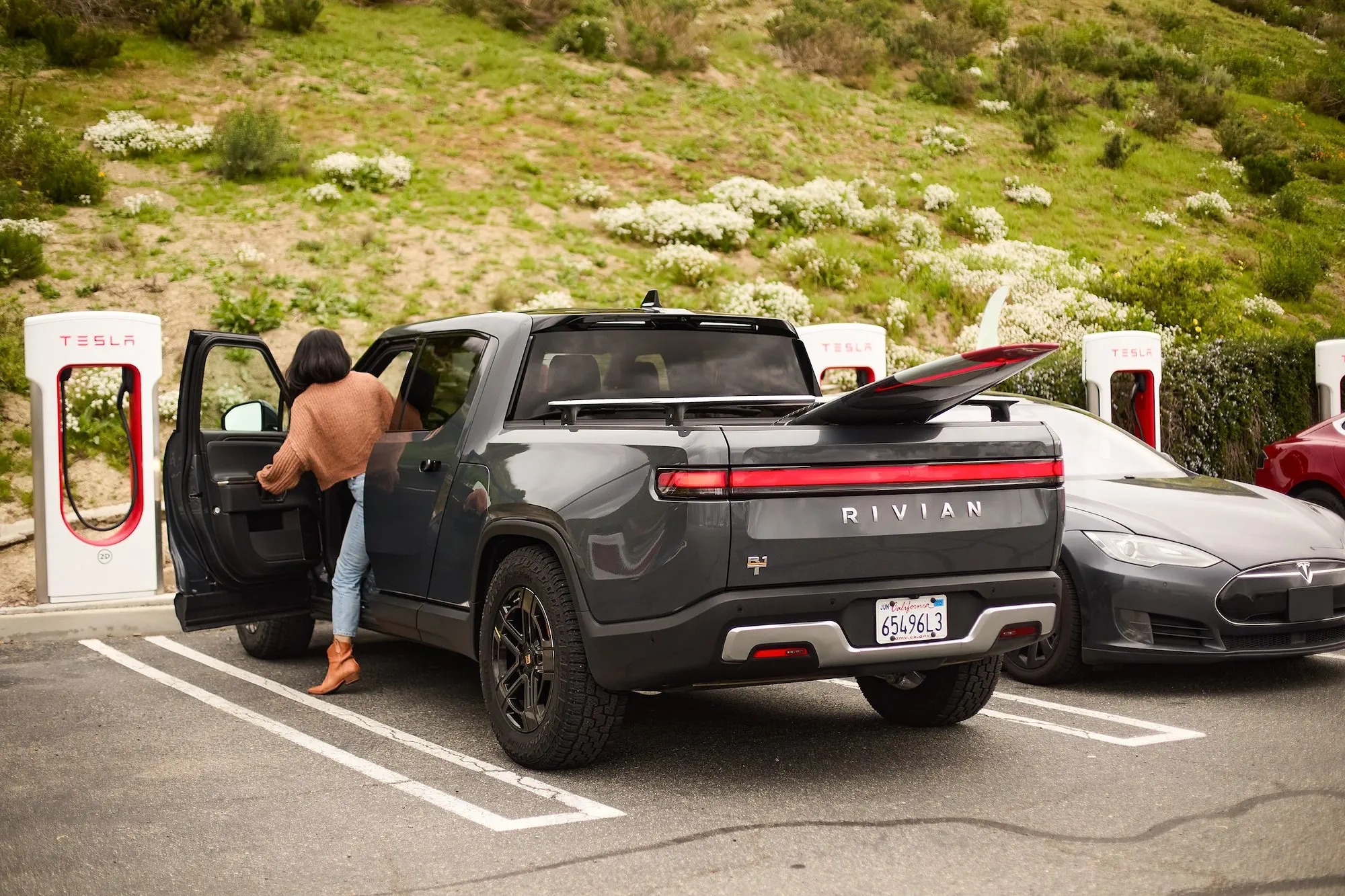

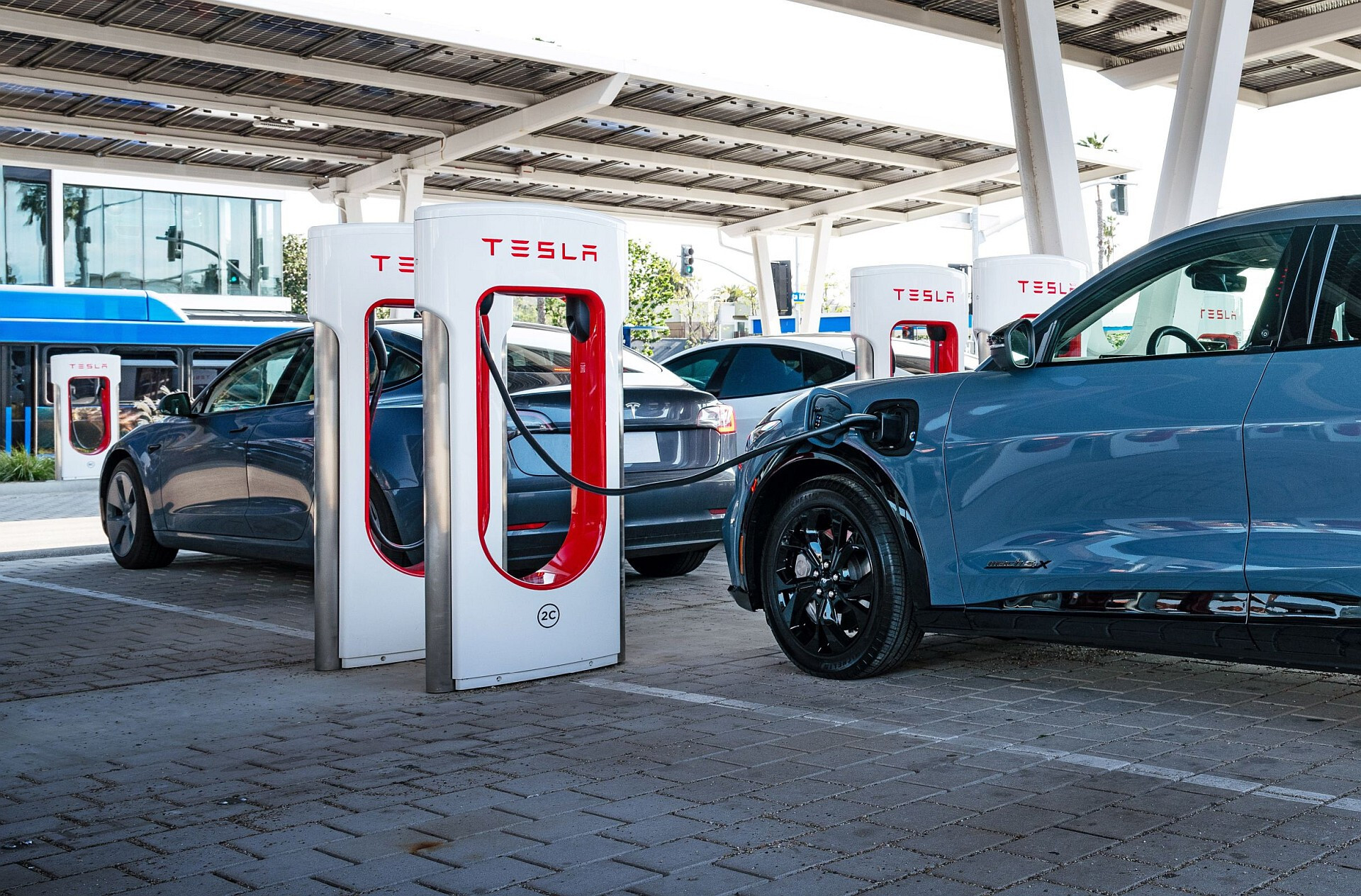
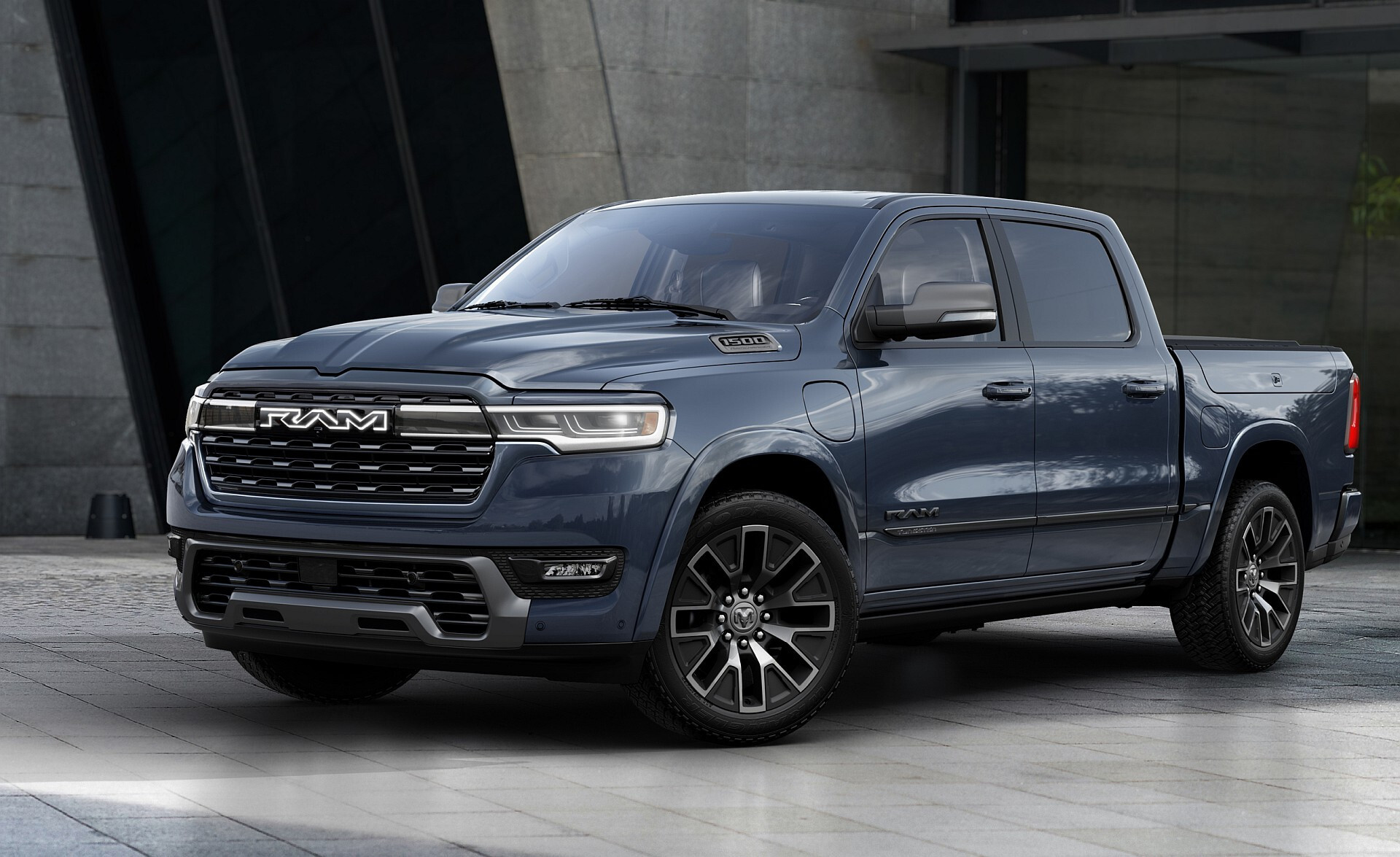
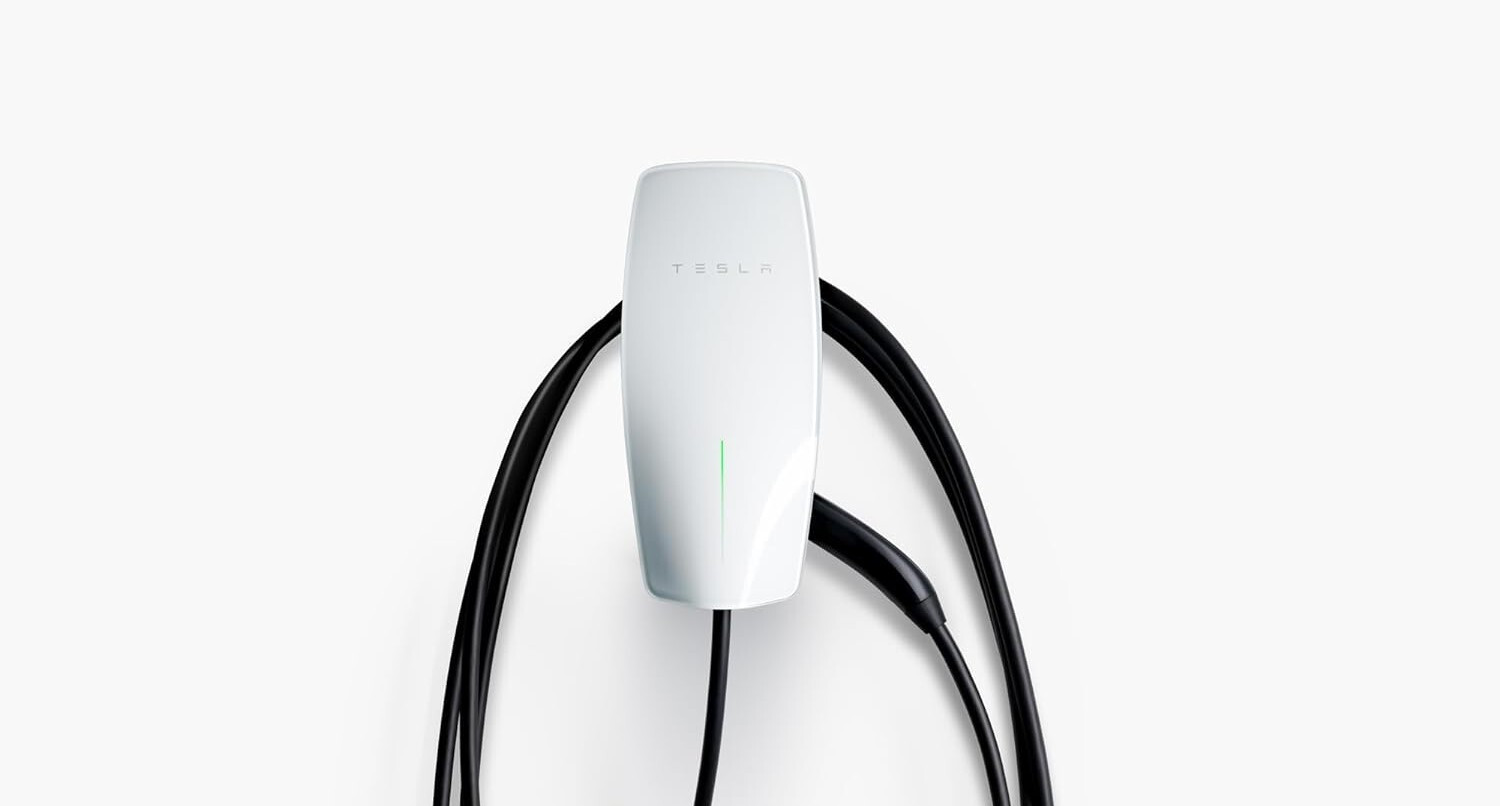

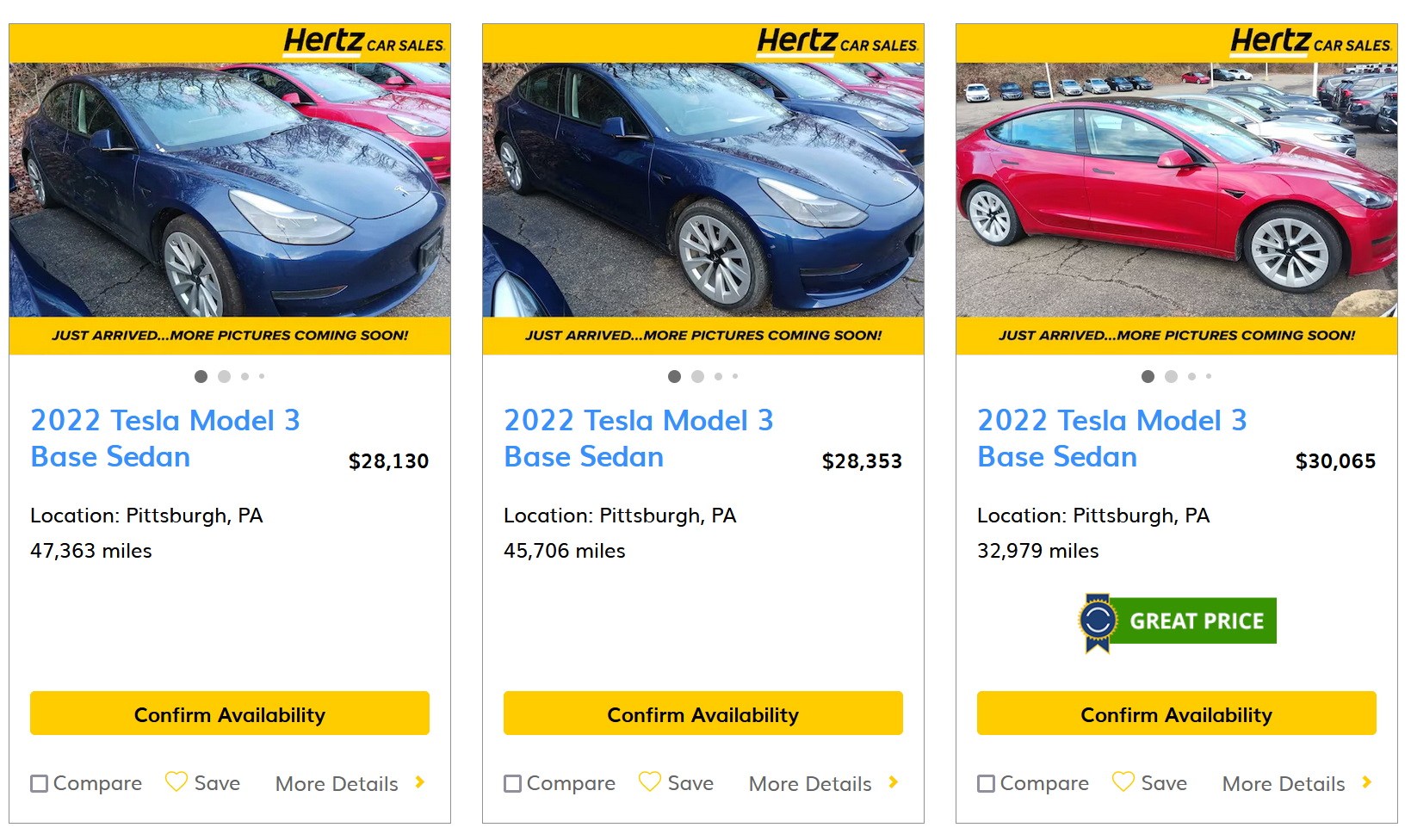
.jpg.45e11d9833523ba30ecc873c1a0a69fd.jpg)
